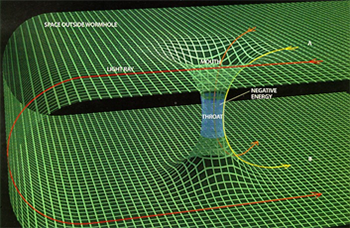InTrans / Aug 19, 2015
Movies in motion: Transportation in Interstellar
Go! Magazine
 posted on August 19, 2015
posted on August 19, 2015
In the last article of the series, “Movies in motion: Transportation in The Matrix and Transformers,” we looked at infamous car chase scenes and how the integration of computer-generated imagery (CGI) into film makes the impossible, possible. In this article, we’re going to explore a film that depicts space travel in a scientific yet futuristic way—Interstellar.
We’ve heard this story before: some kind of natural or human-caused disaster has made life on Earth undesirable/uninhabitable. Think about films such as I Am Legend (cancer vaccine creates zombies), War of the Worlds (aliens inhabit the Earth) and, of course, Interstellar (crop blight makes growing food on Earth nearly impossible). Many films like these play off that thrilling but scary idea: future life on Earth is not a guarantee.
So, as the story goes, the choice is to fix Earth or escape from it. Let’s take a closer look at Interstellar and how director Christopher Nolan envisions the people of Earth traveling to a new planet.
The science of Interstellar
One of the tricky things about depicting space travel is making it all look real. By making films look more realistic, it allows viewers to willing promote the suspension of disbelief. In other words, viewers will still believe a scene is “real,” even if, for example, the ice clouds on one of the planets in Interstellar clearly defy gravity, as long as it looks real (See “Creating passages to new worlds: The role of transportation in film”). To help with the science of Interstellar, Nolan hired the world’s leading physicist—Dr. Kip Thorne—to help. Dr. Thorne specializes in relativity, which is a term originally founded by Albert Einstein to calculate time and gravity.

Cooper, the main character of the film (played by Matthew McConaughey), is asked to save humanity by leading the last available spacecraft, the Endurance, into a “wormhole,” which apparently was created by an alien intelligence. All of this is in an effort to reach a series of three prospective, possibly habitable, planets that exist near what they call Gargantua—a supermassive black hole. The issue isn’t the traveling bit but the time bit. The science of relativity says that a few hours in space can translate to decades for people living on Earth, which makes the mission to save humanity literally a race against time.
Still don’t fully understand “relativity”? What about “wormholes”? Let’s break these terms down. Relativity says that time travels slowest when gravity is highest. For example, the National Aeronautics and Space Administration (NASA) conducted a real-life experiment to understand relativity by shooting a rocket over 6,200 miles into space (i.e., less gravity) and found that time travelled slower on Earth by 30 microseconds per day. Now, if we apply that to the story of Interstellar, when Cooper and his team travel next to Gargantua, which is located galaxies away from Earth, we can better understand the time dilation. For example, one planet they visit is severely dilated; for each hour there, seven years pass on Earth.
But what does a “wormhole” have to do with relativity? A wormhole is a hypothetical feature that would fundamentally be a shortcut connecting two separate points in spacetime. The characters of Intersteller, if traveling without the help of a wormhole, would be hundreds of years late trying to save Earth. However, a wormhole is a shortcut—like a tunnel with two ends with each in separate points in spacetime. So by “skipping” millions of miles through a wormhole, the characters are “saving on mileage” and using a wormhole to come out near Gargantua at a different point in time.
Is this kind of space travel actually possible?
For Interstellar, Dr. Thorne provided Nolan with the science, the knowledge, to imagine what a wormhole would really look like and thus make the film more realistic. But just because it looks realistic, doesn’t mean it can actually be done. Dr. Thorne notes that real space travel through a wormhole, if they even exist at all—researchers have no observational evidence for wormholes—would not work out so well. Because the walls of a wormhole can collapse at any point, it is more likely that anything traveling through a wormhole would be torn to pieces. But for the film, wormholes make for a great plot point!
Interstellar wasn’t completely wrong by talking about NASA’s search for a new, habitable planet. That idea has been on the radar for a long time—probably since the first successful, manned flight into space. But the idea of time dilation is something to really take into consideration when talking about visiting other planets. For now, NASA hopes to eventually send a manned aircraft to Mars to see if there is a way to release water locked in the Martian rocks and if a breathable atmosphere could even be possible there. Prior to even considering traveling through wormholes and to other galaxies, NASA officials say “before we ever really undertake sending something to another star, we will probably have to be masters of our own solar system.”1 And we still have so much to learn!
Citations
Related links
http://www.motherjones.com/media/2014/11/interstellar-movie-science-david-grinspoon-inquiring-minds
http://www.space.com/20881-wormholes.html
http://www.livescience.com/32216-what-is-relativity.html
By Jackie Nester, Go! Staff Writer